World 🢖 Asia 🢖 Saudi Arabia
Islamic shrines 🢔 Religious architecture 🢔 Architectural wonders 🢔 Categories of wonders
Wonder
Kaaba and Masjid-al-Haram
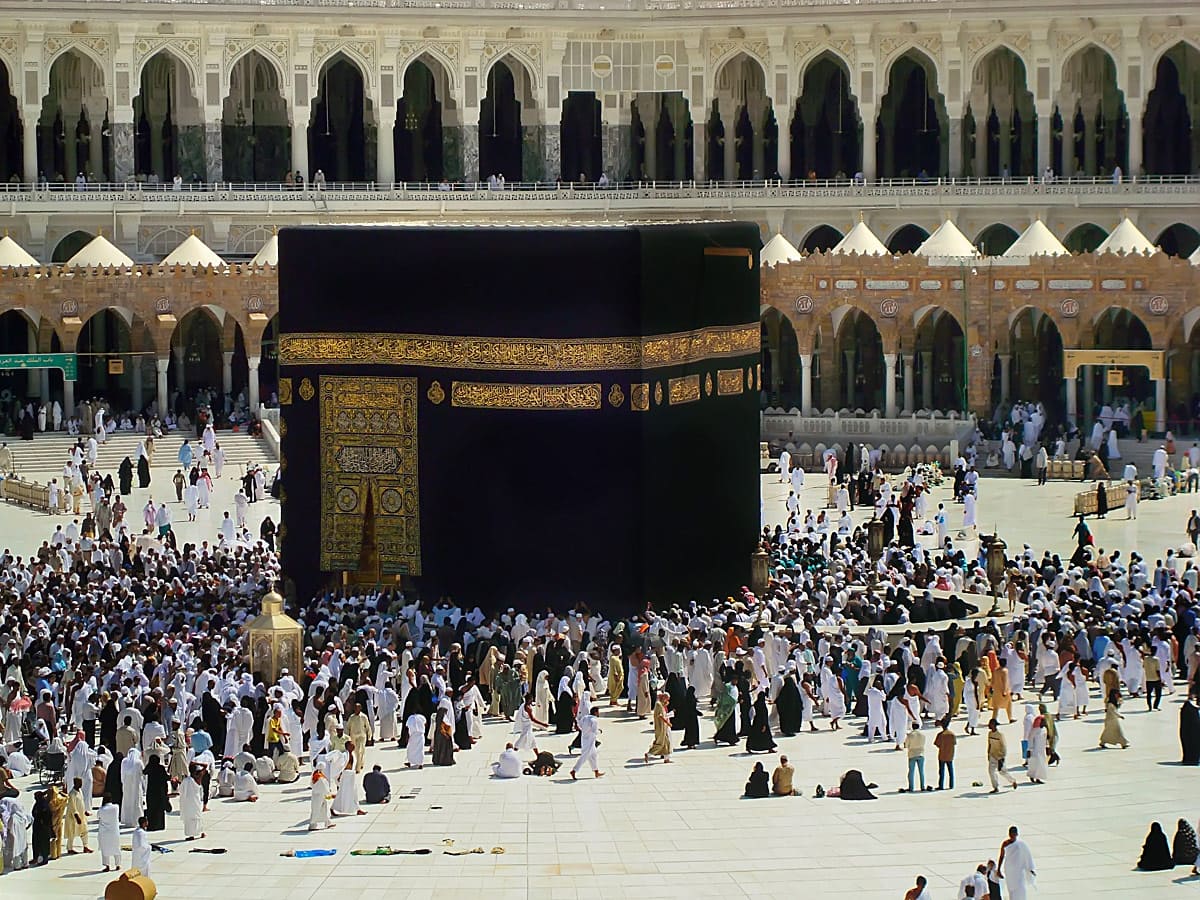
 In short
In short
The history of the mysterious Kaaba started long before Islam and this could be one of the oldest active shrines in the world. Today Kaaba and Masjid-al-Haram around it is the centre of Islam – a religion with some 1.6 billion followers. Thus it is one of most significant places in the world.
 75.0%
75.0%
GPS coordinates
Location, address
Alternate names
Name in Arabic
Age
Religion
Map of the site
If you see this after your page is loaded completely, leafletJS files are missing.
 In detail
In detail
The tale about Hagar and Ismael
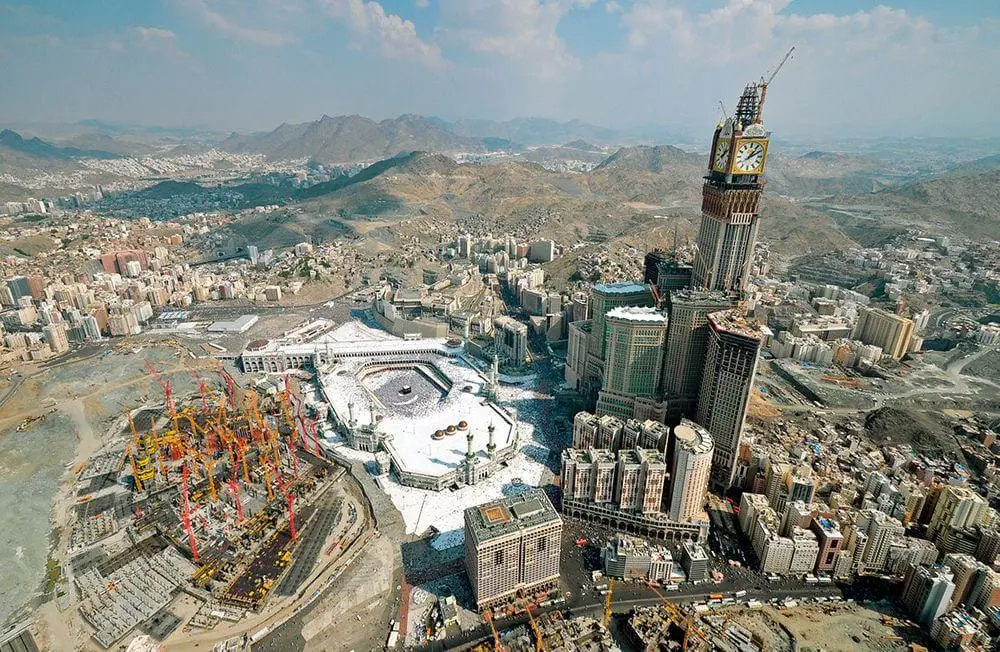
No one knows for sure how this shrine came into existence – but very old legend says that the events started with the following:
God ordered to Ibrahim to leave his wife Hagar and their baby son Ismael in the desert between two hills – Al-Safa and Al-Marwah. In those times, sometimes around 2030 BC, this was an empty and lifeless desert. Hagar had only basic provisions and God wanted to test her faith.
Soon Hagar had to look for water. She was weak and thus she left Ismael on the ground.
Hagar at first climbed Al-Safa hill and looked around for water. With no success, she ran across the valley and then climbed the other mountain – Al-Marwah. Thus she was running seven times between both hills and finally returned to her son – without any water.
But God assisted them. The small Ismael was kicking the ground with his feet and in this place was created a freshwater spring – Zamzam Well. This was the reward for the patience of Hagar.
Kaaba
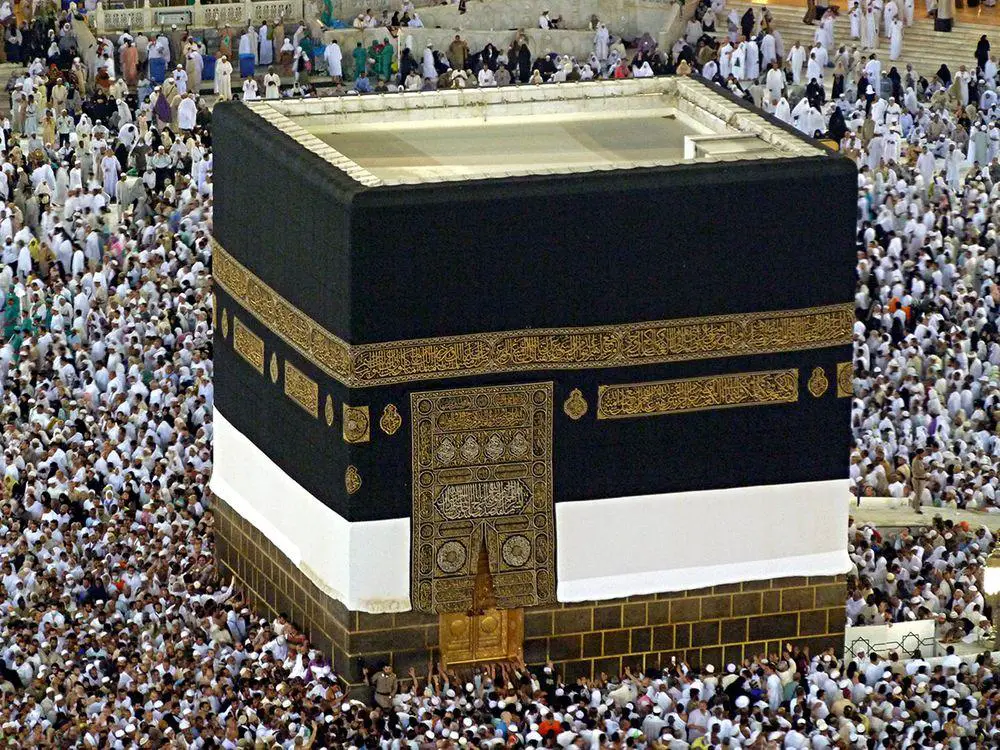
According to legend (no one knows – when it happened in reality) Kaaba was built during the lifetime of Ismael, around 2030 BC. Qur’an tells that Kaaba is the first house in the world built to worship Allah – some versions of legends tell that it was built well before Ismael – by Adem, the first human. It is assessed that Kaaba became a place of pilgrimage sometimes around 500 AD.
Local tribes of different faith gathered here and placed sculptures of their idols around Kaaba. It is possible that the dominating religion before Islam was the cult of Hubal, possibly brought from the north.
Muhammad and his followers destroyed the statue of Hubal in 630 AD, together with 360 other idol statues. Since 630 AD Kaaba is the main shrine of Muslims – and only Muslims.
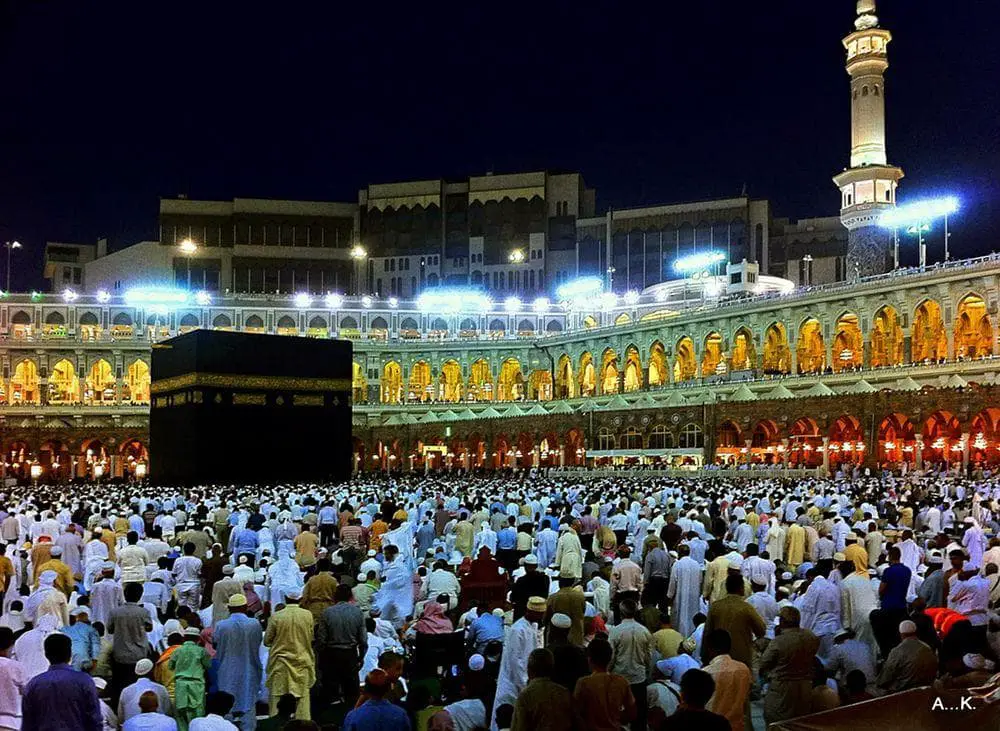
Mecca was announced as a place free from violence and warfare – it was not allowed within 32 km around Kaaba. Elsewhere in Arabia tribes were constantly fighting each other – but Mecca was a place of peace and due to this it became an important center of trade.
Nevertheless violence has taken place in Kaaba – it was partly destroyed in 683, 692 (rebuilt in the present form in 693 AD), and in 930 AD, when the Black Stone was stolen and returned only in 952 AD.
Kaaba has been rebuilt numerous times, but it is possible that for the most part, it was similar to a contemporary cuboid building.
Height of this cuboid (not an exact cube, but similar to it) is 13.1 m. It is built from locally mined granite and stands on a marble base.
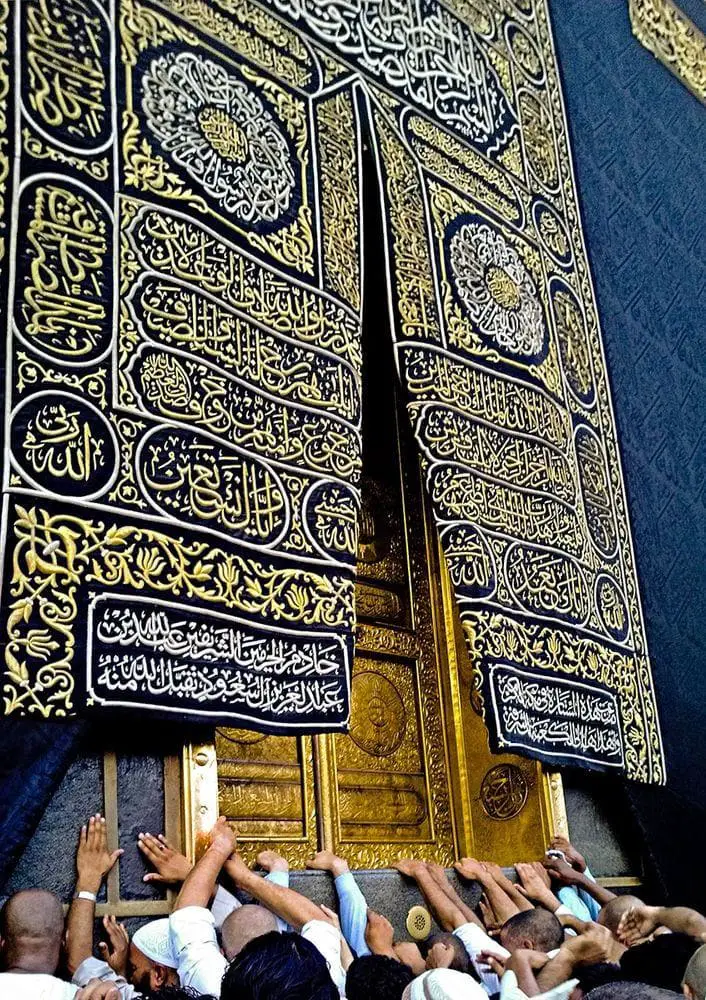
Corners of the building roughly point at four cardinal directions – to the north, south, east and west.
Kaaba has room inside, which is partly clad with marble, containing Qur’anic inscriptions. 300 kg heavy door from gold (made in 1979) leads into this room.
Twice per year Kaaba is opened for the ceremony of cleaning, where a small number of high-ranked people are invited. They get brooms and clean Kaaba with a mix of Zamzam water and Persian rosewater.
Kaaba is covered with ornate black and gold silk fabric – Kisva (Kiswah). This is an enormous, 670 kg heavy cloth, which may contain up to 15 kg of gold. Kisva is replaced every year during the Hajj.
It is possible that this tradition started before Islam – a silken veil over a local shrine has been mentioned already before the Christian era – and already then it was replaced once per year.
Black Stone of Kaaba
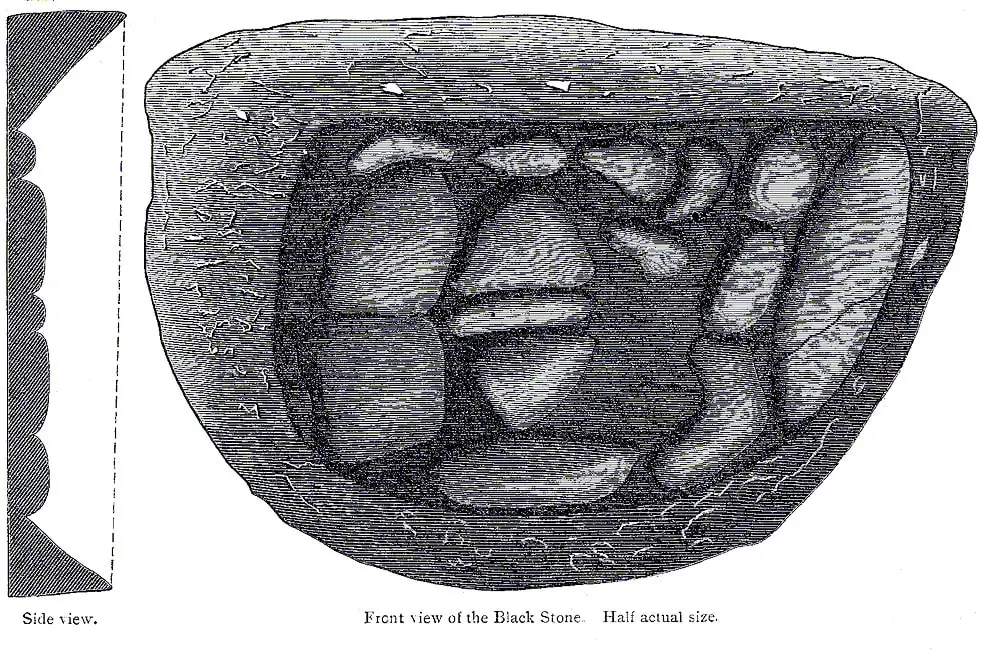
Outside, into the eastern corner of Kaaba is built the Black Stone (Al-Ħajaru l-Aswad).
This is a black stone, 20 by 16 cm large, polished by millions of hands. Earlier it was considered that this is a meteorite, also some local traditions see the stone as a link between heaven and earth. Lately, though many specialists think, that this is not a meteorite but rather very dark agate or other local material. Stories tell that stone floats in water.
This mysterious stone was brought here as a sacred, very important relic of some earlier religions. Most likely it was revered similar to the reverence to many unusual natural objects – old trees, powerful springs, large stones, and unusual rock formations.
According to Muslim legend the Black Stone was brought to the shrine in Mecca sometime around 2130 BC by an angel, who told that this stone fell from the sky in the nearby Abu Qubays hill.
It was built into the wall of Kaaba earlier – but it is known that also Muhammad built it into the eastern corner of Kaaba in 605 AD, during the repairs.
Stone disintegrated into smaller pieces – reportedly during the warfare in 683 AD or during the fire earlier in the late 6th or the early 7th century.
Masters solved this problem by making a silver frame around the stone and fastening all pieces with silver nails. It is not known whether all is visible or there are more pieces inside the cement.
Zamzam Well
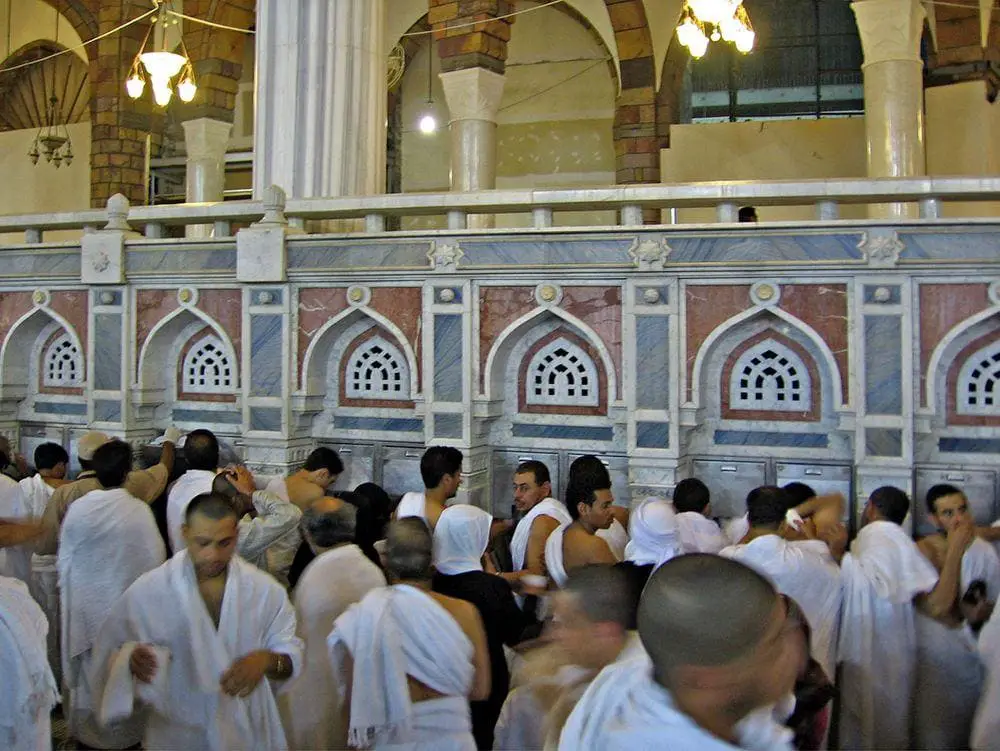
Some 20 m east from Kaaba is located the purported miraculous spring – Zamzam Well. Muslims believe that the spring is miraculously created by God thousands of years ago (see above the legend about Hagar and her son Ismail).
Zamzam Well is artificially excavated, approximately 30 m deep well, with a diameter of 1 – 2.66 m. It is laid with stones, the deeper part goes through the bedrock. Groundwater supply to this well is abundant, the natural level of water is 3.23 m below the surface.
Water from Zamzam Well is tested daily and is definitely suitable for drinking. It has a distinct, salty taste.
At the beginnings of Islam this was simple well with stone fencing around it. A dome was built over it in 771 AD, many more reconstructions and rebuildings followed in coming centuries.
As the number of pilgrims increased with every year, the gathering of people around the well disturbed those who were circling around Kaaba. In 1915 the building above the well was removed and water from the spring is pumped with electrical pumps to the eastern part of Masjid al-Haram and is available in separate places for women and men.
Formally it is prohibited to sell Zamzam water outside Saudi Arabia but somehow it is available in many countries. The origins of such water are unclear and it may not be clean and healthy.
Masjid al-Haram
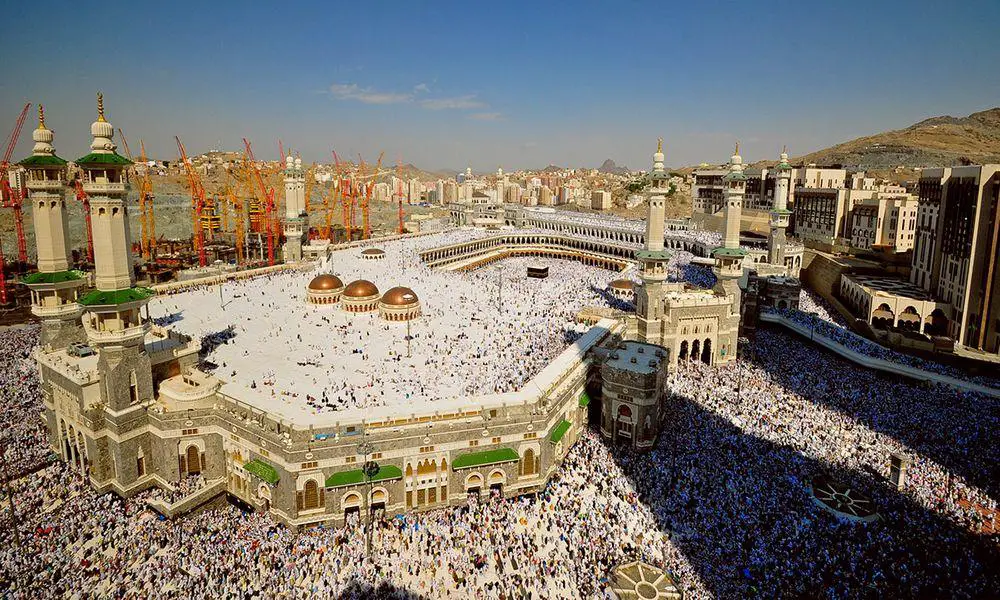
The largest mosque in the world – Masjid al-Haram – is built around all these sacred places.
The first mosque was built here in 692 AD, numerous rebuildings and extensions have taken place since then. Construction activities seem to be eternal here – all the time around the sacred sites are seen numerous construction cranes.
Nowadays mosque has an area of 35.7 ha and can accommodate up to four million pilgrims. It has nine, up to 89 m tall minarets.
This is one of few mosques, where men and women worship together.
The giant Masjid al-Haram includes also both sacred hills, where Hagar was looking for water – Al-Safa and Al-Marwah. Distance between the hills is approximately 450 m and Muslims should walk seven times forth and back between the hills, starting from Al-Safa. This walking should be done on the same day when Tawaf (seven circles around Kaaba) is done.
The fate of contemporary pilgrims though is much easier than the fate of Hagar. The walk between both hills today leads through a long, air-conditioned gallery.
Islamic traditions
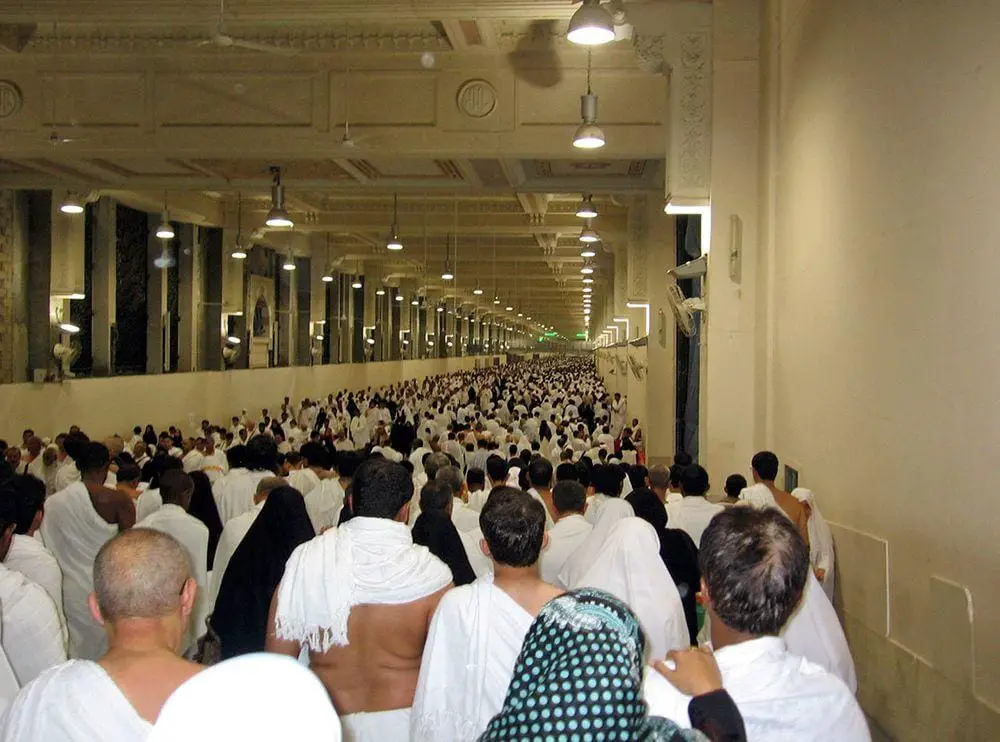
The last of the Five Pillars of Islam requires that every Muslim should make a pilgrimage to the sacred places in Mecca at least once in lifetime.
Most Muslims come here during the Hajj – a certain time of the Islamic calendar. As globalization continues, more and more people are able to come here, and in recent years Mecca experiences unseen numbers of pilgrims: many millions of people.
When pilgrims enter the enormous square around Kaaba, they have to walk seven times counter-clockwise around Kaaba (ritual of Tawaf) and – if possible to access – kiss the Black Stone each time. Now, when the square is filled with many thousands of believers, they are allowed just to point with a hand towards the Black Stone.
According to legends, Tawaf is a very ancient tradition that started well before Muhammad – maybe even thousands of years earlier.
Kaaba is remembered every day almost anywhere on the globe – five times per day Muslims around the world are praying in the direction of Kaaba.
 Linked articles
Linked articles
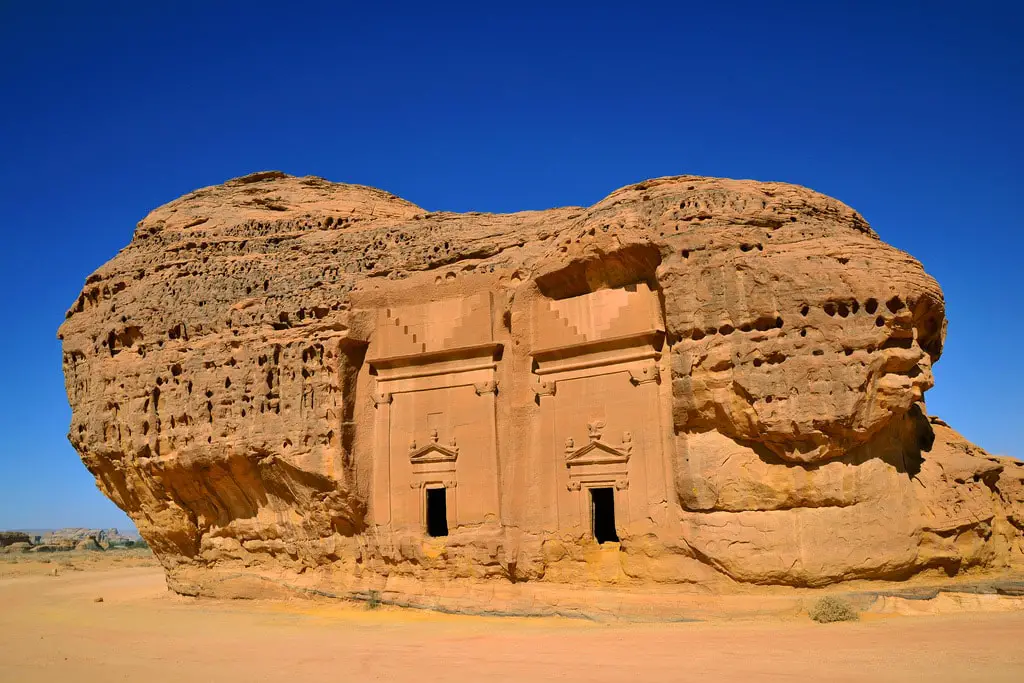
Wonders of Saudi Arabia
Many landmarks in Saudi Arabia are little known to the outside world, and, unfortunately, many amazing attractions are deliberately destroyed.
Nevertheless some Saudi Arabian landmarks are world-renowned and one – Kaaba in Masjid al-Haram, Makkah – is one of the most important places in the world.

Islamic shrines
Place for worship in Islam is called a mosque. Mosques serve also for education, news exchange, and dispute settlement.
Initially, in the 7th century mosques were unpretentious, large halls for gatherings. Over time, as Islam was spreading, there developed diverse, locally adapted architectural forms of mosques.
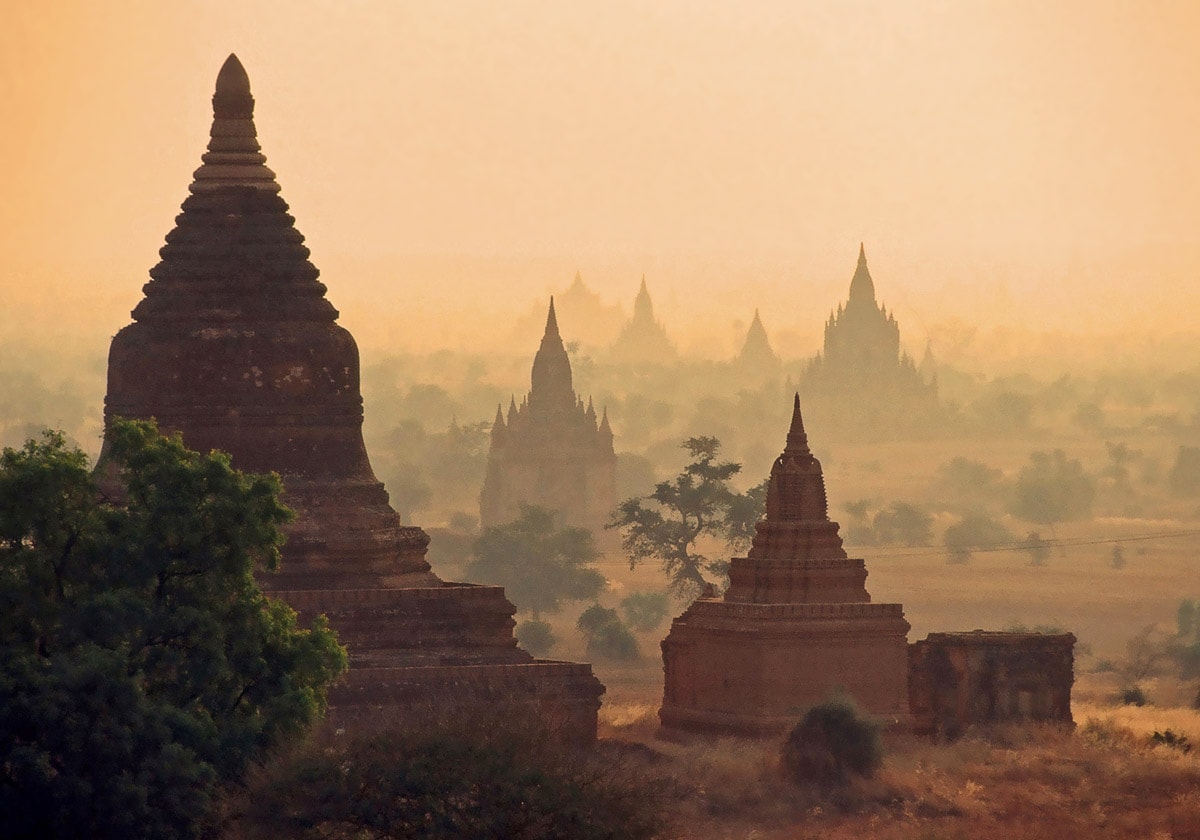
Wonders of Asia
Any other continent (and part of the world) seems small if compared to Asia. This refers also to natural and man-made heritage: in Asia are not just thousands of great landmarks, there are found landmarks created by thousands of diverse cultures from ancient Phoenicians to the mysterious small people in the Philippines and eastern islands of Indonesia.
 Recommended books
Recommended books
Secret Realities of Hajj
Secret Realities of Hajj features invaluable teachings and spiritual insight into the Islamic holy pilgrimage of Hajj. From the historical references of holy prophets to the remarkable scientific explanations of circumambulation, this book provides a deeper understanding of this important pillar of faith.
The First Muslim: The Story of Muhammad
Muhammad’s was a life of almost unparalleled historical importance; yet for all the iconic power of his name, the intensely dramatic story of the prophet of Islam is not well known. In The First Muslim, Lesley Hazleton brings him vibrantly to life.


